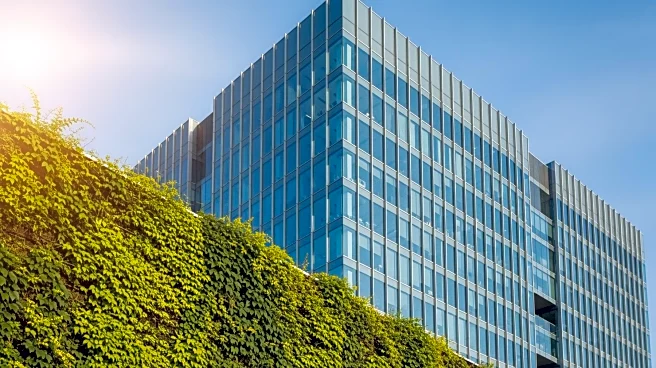What's Happening?
The U.S. office market is experiencing a rebound, entering a growth cycle as vacancy rates decline for the first time since early 2019. According to JLL's Q3 office market dynamics report, national office vacancy rates fell
to 22.5% at the end of the third quarter. Leasing activity has reached 82% of pre-pandemic levels, with gross leasing volume growing 6.5% quarter over quarter. The decline in vacancies is attributed to stabilizing demand and expanding office footprints, despite minimal new development. Large-scale transaction activity has returned, with significant growth in leases over 100,000 square feet.
Why It's Important?
The decline in office vacancy rates signals a recovery in the U.S. office market, which has struggled with vacancies since the pandemic. This growth cycle is crucial for the real estate industry, as it indicates increased demand for office space. The return to office mandates and the scarcity of new construction are driving demand, even for less-than-trophy assets. As Tier 1 and trophy stock become scarce, lower Tier 2 rental rates are rising, reflecting shifts in market dynamics. The recovery in office attendance and leasing activity is a positive sign for the economy, as it suggests a return to pre-pandemic norms.
What's Next?
The office market may continue to experience declining vacancy rates as demand stabilizes and office footprints expand. The shift towards more stringent attendance policies could further drive demand for office space. As flexible policies fade, more employees from Fortune 100 companies are returning to the office full-time. The scarcity of high-quality office spaces may lead to increased competition and rising rental rates in lower-quality segments. The market will likely see continued adjustments in leasing activity and rental rates as it adapts to post-pandemic conditions.
Beyond the Headlines
The recovery in the office market has broader implications for urban development and economic growth. As office attendance increases, cities may experience revitalization, with potential impacts on local businesses and infrastructure. The shift towards more stringent attendance policies reflects changing workplace dynamics and could influence corporate culture and employee satisfaction. The scarcity of high-quality office spaces may drive innovation in office design and development, as companies seek to attract and retain talent in a competitive market.












